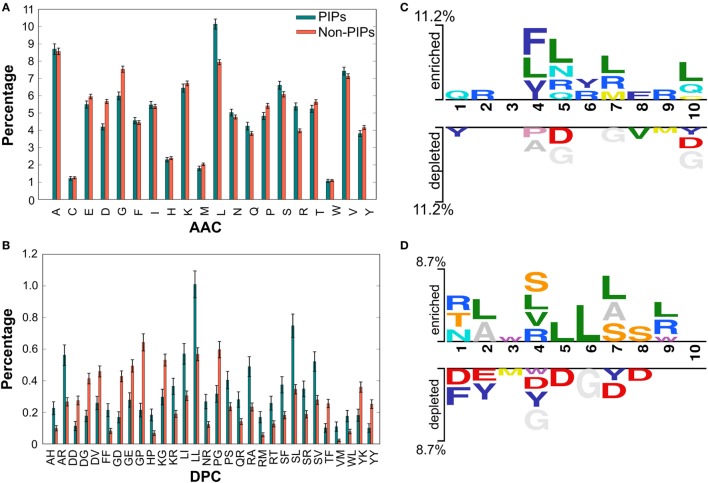Figure 2.
Compositional and positional preference analysis. (A,B) Respectively represent the amino acid and dipeptide preferences between proinflammatory inducing peptides (PIPs) and non-PIPs. In (B) significantly different top-30 dipeptides are shown. (C,D) Represent positional conservation of 10 residues at N- and C-terminal between PIPs and non-PIPs, respectively, generated using two sample logos.

